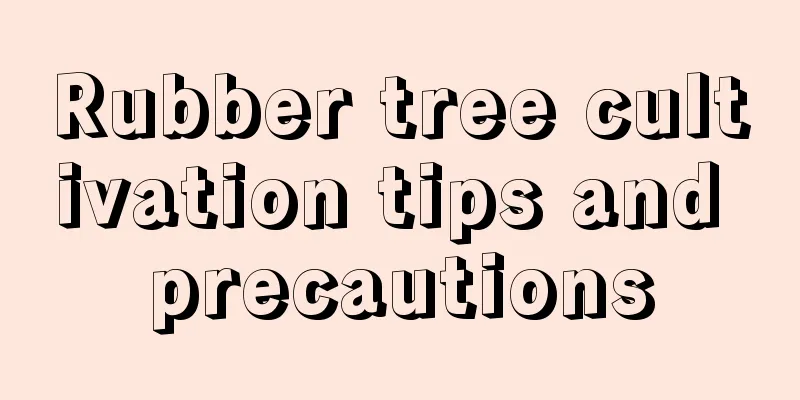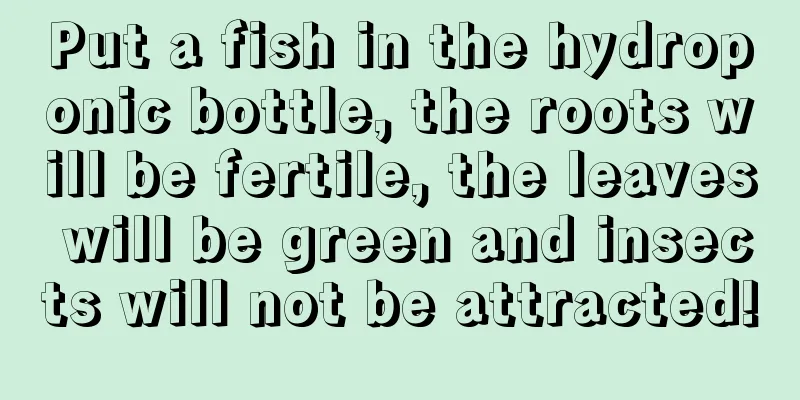Rubber tree cultivation tips and precautions

|
The rubber tree has become a leader among indoor foliage plants with its unique shape, powerful air purification ability and tenacious vitality, and is suitable for home and office decoration. Let’s learn about the cultivation techniques and precautions of rubber trees. 1. Lighting Rubber trees love light and need to be placed in a sunny place indoors to promote photosynthesis and make the leaves thick and dark green. In summer, proper shade is needed to avoid leaf burns. 2. Soil The soil needs to be loose, well-drained and breathable. It can be prepared with 2 parts of leaf mold, 2 parts of garden soil, 1 part of coal slag and a small amount of decomposed organic fertilizer (such as chicken manure and bone meal) to provide sufficient fertility and promote plant growth. 3. Fertilization Add appropriate amount of base fertilizer when repotting in early spring. In summer, apply decomposed cake fertilizer water once every 2 weeks or a small amount of slow-release fertilizer granules every month. Fertilize every 20 days in spring and autumn. Stop fertilizing in winter to avoid root burn due to low temperature. When applying fertilizer, you need to follow the principle of "applying small amounts of fertilizer frequently" to avoid burning the roots with concentrated fertilizer. 4. Watering Follow the principle of "water thoroughly when dry", water when the soil surface turns white, and do not water when it is moist. Water every 2-3 days during the growing season and once every 2 weeks in winter. 5. Pruning When the rubber tree grows to a certain height, it needs to be topped to promote side branches and make the plant fuller. During the growth period, the messy branches need to be thinned out to ensure ventilation and light transmission. 6. Notes Insufficient light will cause the rubber tree to grow too tall, the distance between leaves will become larger, the plant shape will become loose, and its ornamental value will be reduced. Spraying water is only used to reduce temperature and increase humidity, and cannot replace watering. When the temperature is below 15℃ in winter, watering should be reduced to ensure the safe wintering of the plants. The above is an introduction to the cultivation techniques and precautions for rubber trees. Flower lovers who have rubber tree potted plants at home can refer to them based on their growth conditions.
|
<<: Lemon tree cultivation tips and precautions
>>: Cultivation techniques and precautions of Schefflera
Recommend
These 8 kinds of flowers turn into blooming machines in autumn and still burst into balls when it’s cold!
Kalanchoe - Sprinkle some bone meal and buds will...
Can urine be used to water roses?
Can roses be watered with urine? Roses can be wat...
How long does it take for lily to adapt to the pot?
Lily and jasmine acclimatization time Generally s...
What to do if the rubber tree has black spots
1. Anthrax It is very prone to anthracnose, which...
How to plant freesia? Planting time and method
Freesia planting time The planting time of freesi...
Can I eat cherries if there are worms in them?
1. Reasons The bugs in cherries are the larvae of...
What is the function of bellflower
The first function of bellflower: ornamental Camp...
If you want your flowers to spend the Spring Festival safely, you must do these 5 things
Water less I believe all flower lovers should und...
How to prune thyme
When to prune thyme Thyme can be pruned at any ti...
The difference between Huoxuedan and Viola yedoensis
1. Leaves The leaves of Dandelion are herbaceous,...
How to make the maiden's heart turn red, what to do if it grows too long
1. How to make the maiden's heart turn red If...
How to grow blue chrysanthemum
Growth habits of blue chrysanthemum Blue-eyed chr...
What to do if the chicken feather vegetable grows too long
What does it look like when chicken feather veget...
Can Mirabilis jalapa be planted in a pot?
1. Can be planted in pots As long as we are famil...
Does the Basil Tree bloom?
Flowering period The bachelor tree will bloom, an...









